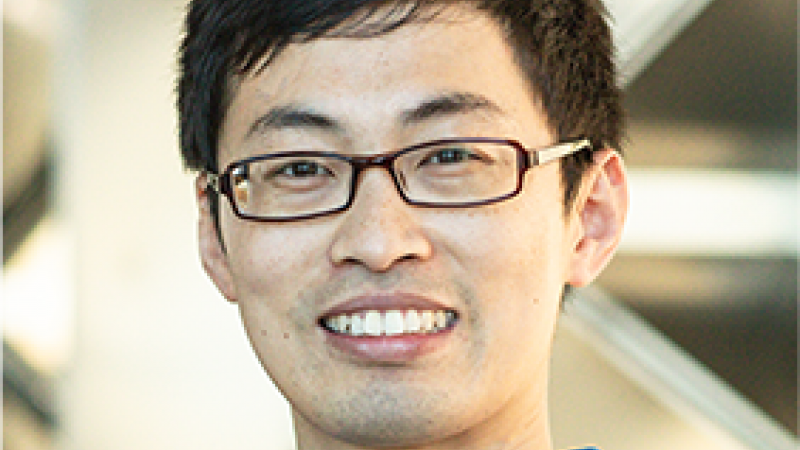CBRC launched its first ever Dual seminar series on the 15th of March. The seminar featured two talks:
Talk 1
Speaker: Keying Guo
Topic Title: A Bioelectronic Platform for Rapid Detection of COVID-19 and More
Abstract:
The COVID-19 pandemic has highlighted the need for rapid and sensitive protein detection and quantification in simple and robust formats for widespread point-of-care applications. We here introduce a modular nanobody-functionalized organic electrochemical transistors (OECT) architecture that enables rapid quantification of single-molecule-to-nanomolar levels of specific antigens in complex bodily fluids. The sensors combine a new solution-processable organic semiconductor material in the transistor channel and the high-density and orientation-controlled bioconjugation of nanobody–SpyCatcher fusion proteins on disposable gate electrodes. They provide results after 10-min of exposure to 5 μL of unprocessed samples, maintain high specificity and single-molecule sensitivity in human saliva and serum, and can be reprogrammed to detect any protein antigen for which nanobodies exist. We demonstrate the use of this highly modular platform to detect green fluorescent protein (GFP), SARS-CoV-2 and MERS-CoV spike proteins, and for the COVID-19 screening of unprocessed clinical nasopharyngeal swab and saliva samples with a wide range of viral loads. The speed, performance and versatility of our nanobody-functionalized OECT, and its compatibility with many sample types, suggest that this biosensor technology can complement or replace a wide range of clinical and non-clinical diagnostic assays for serious diseases including but not limited to COVID-19.
References:
1. Keying Guo#, Shofarul Wustoni#, Anil Koklu#, Escarlet Díaz-Galicia, Maximilian Moser, Adel Hama, Muhammad Shuaib, Arnab Pain, Iain McCulloch, Stefan T. Arold*, Raik Grünberg*, Sahika Inal*, Rapid single-molecule detection of COVID-19 and MERS antigens via nanobody-functionalized organic electrochemical transistors, Nat Biomed Eng 5, 666–677, 2021.
Bio:
Keying Guo received his Bachelor and Master degrees in Materials Science and Engineering from 2008 to 2015 in China. He further received his PhD in Drug Delivery Sciences from Monash Institute of Pharmaceutical Science at Monash University, Australia. His PhD specialized in fundamental and applied aspects of biosensors using porous silicon-based nanostructures. In September 2019, he joined Professor Sahika Inal’s group as a postdoc researcher. His research interests lie on the designing organic electrochemical transistor-based bioelectronic devices that enable point-of-care diagnostics for serious diseases including neurodegenerative disease such as Parkston’s disease.
Talk 2
Speaker: Raik Grunberg
Topic Title: Designer proteins for biolelectronic sensors and other applications
Abstract:
In collaboration with the Inal lab, we have devised a bioelectronic sensor platform that can rapidly detect a variety of protein targets in unprocessed biological samples. I am going to discuss our design of specific recognition proteins that self-assemble onto the sensor surface at high density. We are now extending this platform to the detection of multiple new disease targets. Most of these targets are proteins which we detect through specific nanobodies. However, more recently, we have started to adapt various RNA-targeting CRISPR proteins to our bioelectronic sensors. CRISPR-OECTs will greatly expand the diagnostic applications for our sensors but, for now, also teach us some basic research lessons on how CRISPR proteins interact with target and non-target RNAs.
Bio:
Raik received his Diploma in Biochemistry from Leipzig University in Germany. His computational PhD project at the EMBL Heidelberg and the Institute Pasteur in Paris examined the interplay of protein dynamics and protein-protein interactions with molecular dynamics simulations and protein docking. He then moved back from the computer screen to the wet lab and used a postdoctoral position at the Center for Genomic Regulation (CRG, Barcelona) to enter the field of protein synthetic biology. After a position as a research associate at the Institute for Immunology Research (IRIC) in Montreal, he joined the Arold lab at KAUST as a research scientist. Raik is particularly interested in the design of multi-domain proteins and protein interaction systems as well as laboratory automation and structure modelling.
